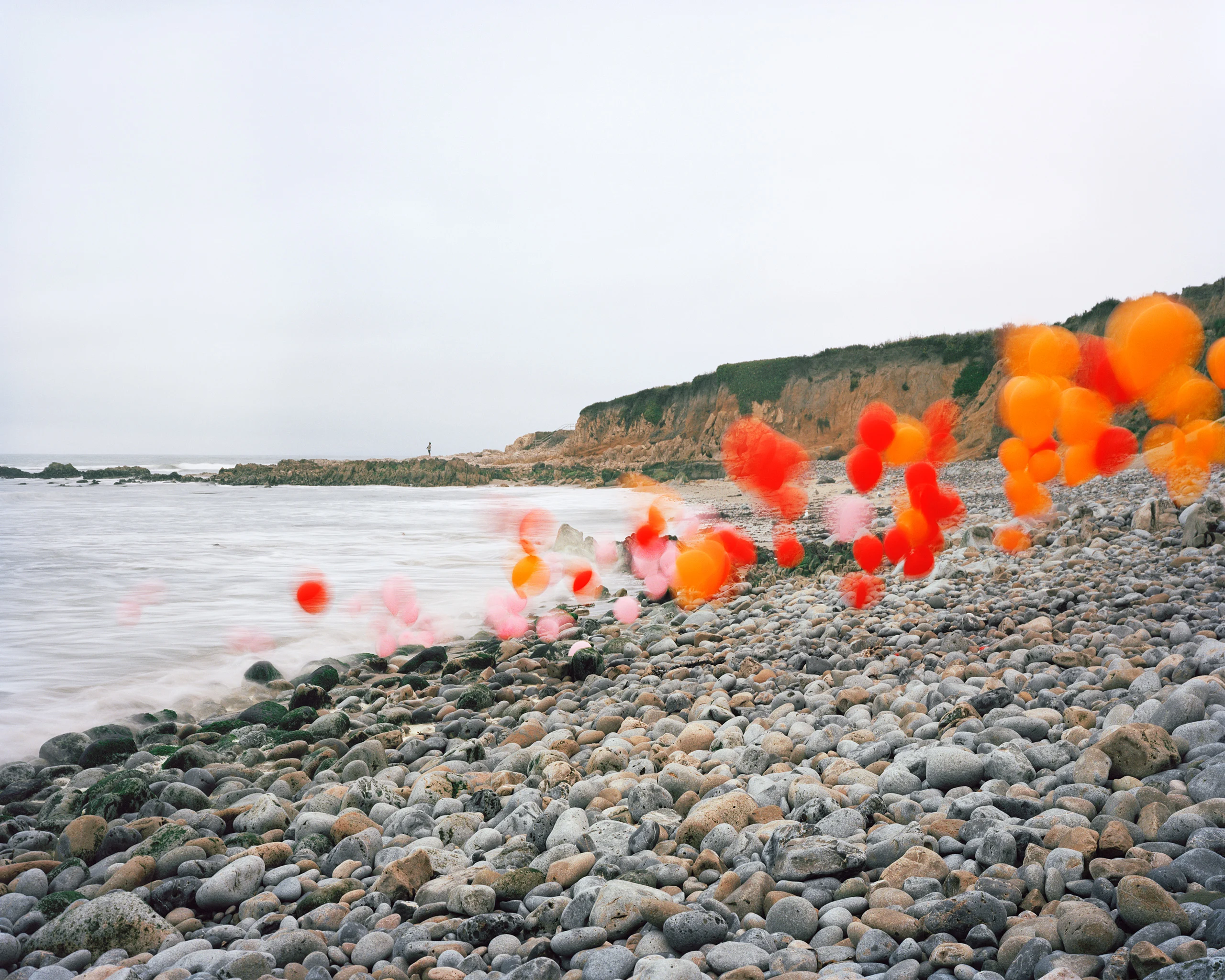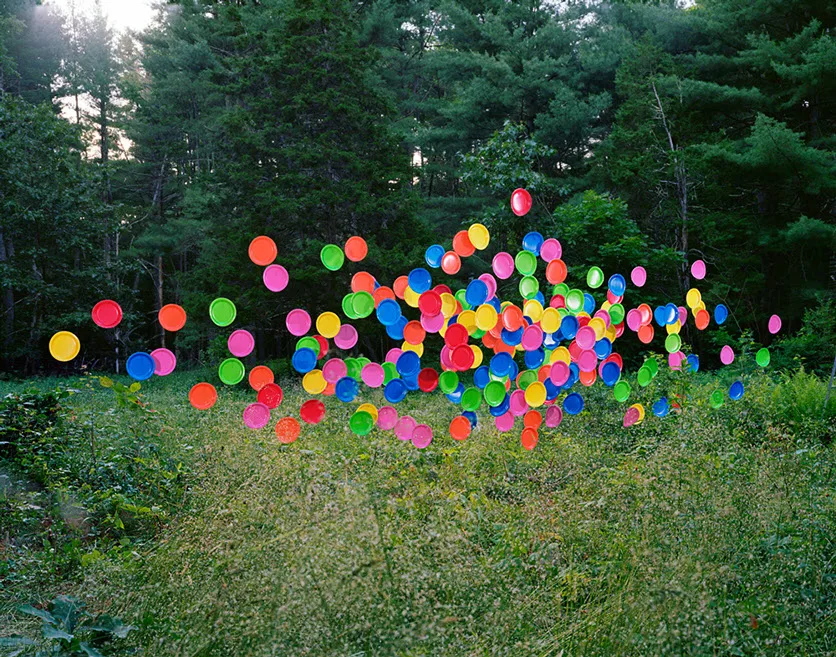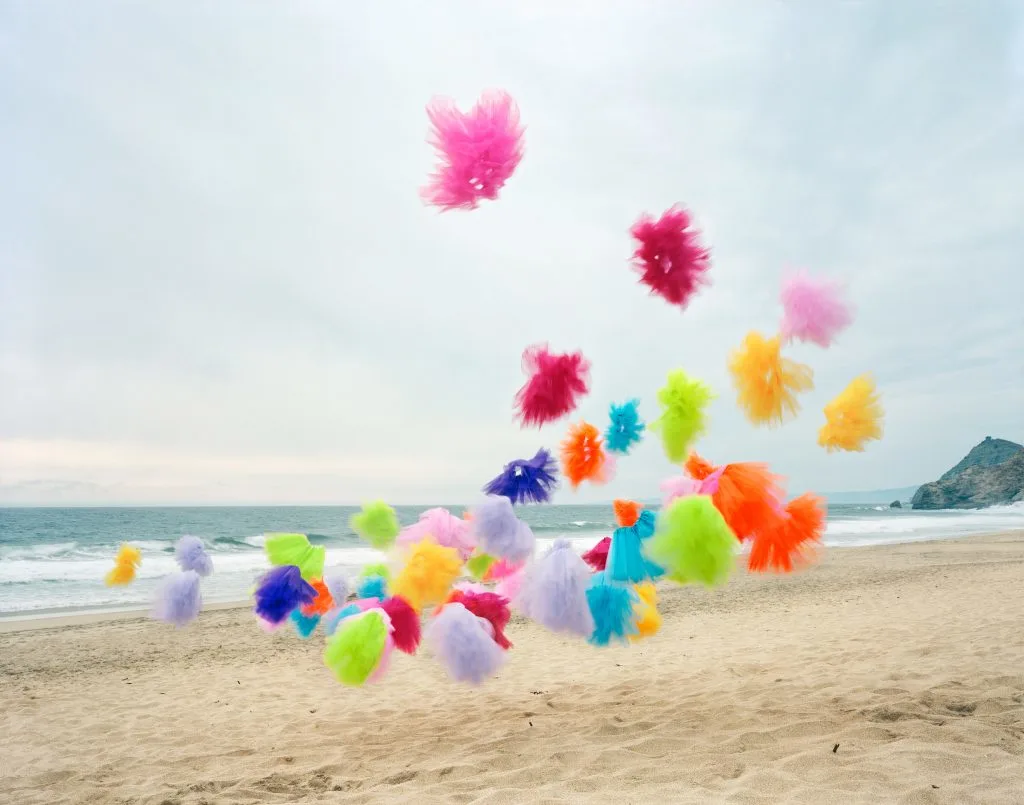
The first time I was looking closely how each of the objects were placed in the scene of Thomas Jackson’s series Emergent Behavior, I was certain his work was digitally edited. There was no way those plastic plates were really there between those trees! But you’re actually looking at carefully constructed installations – if you look really closely you might see fishing lines holding up those hula hoops.

The objects displayed couldn’t be more out of place, but they swarm as animals – flocking birds, termite mounds and schooling fish. The artist explains, “I am interested in how we humans are simultaneously ‘of’ the natural world, yet completely divorced from it. The sculptures in my images are meant to reflect that contradiction.”
The objects you see are juxtaposed in such a manner that they act as if they were self-organizing “emergent” systems in nature. At the same time, we all know you don’t find these objects anywhere out in the wild unless people have put them there. Thomas describes it as an, “uneasy interplay between the natural and the manufactured and the real and the imaginary.”

The artist builds the installations in a single day, which always makes it a race against the clock. It’s important he has all his gear set up before the sun sets, although he prefers to take photos right after. He’ll start early in the morning but there are always unforeseen variables at play, such as gusts of wind or rogue waves. “I’ve only had a couple of disasters so far, for which I count myself very lucky,” he says.
Thomas works intuitively. There was a time when he tried to mimic actual swarming behaviors found in nature (Glow Sticks no. 2 is modelled after the mating habits of midges for example) but realized he found this approach too constricting. “I try to imagine how a given material – cups, cheese balls, hula hoops – would behave as a group of living organisms imbued with collective intelligence.” Working in this manner gives him more creative freedom.

Choosing objects and locations is also an organic process. For his materials, Thomas likes to walk through the aisles of stores that sell cheap, manufactured stuff in bulk. He particularly likes plastic cups and plates that are designed to interlock. The lesser the object resembles anything you can find in nature, the bigger the chance it will appear in Thomas’ work.
But the locations he looks for should have the opposite characteristics. He searches for places with little or no sign of human intervention. “I look for landscape features I can make my sculpture interact with – a sloping hillside, a curving stream bed, the sun on the horizon.”
The combination of the two makes for beautiful compositions. The colors and the forms couldn’t be more contrasting, and therefore set up a dialogue between nature and civilization that appears improbable. This not only makes his work pleasing to look at, it leaves you questioning human intervention and how we impact on our surroundings. In Thomas’ works, the inanimate objects and natural settings appear to be so estranged that any form of conversation seems highly unlikely.

